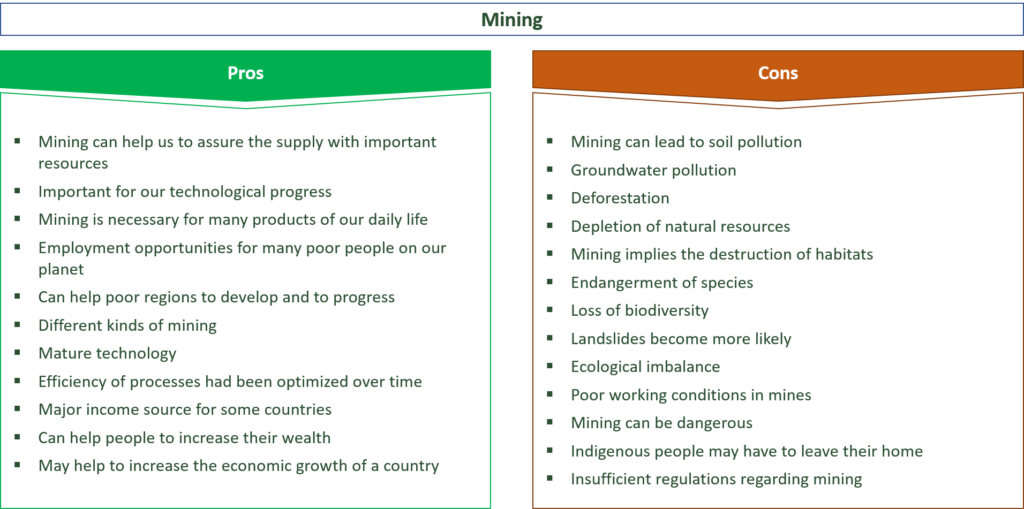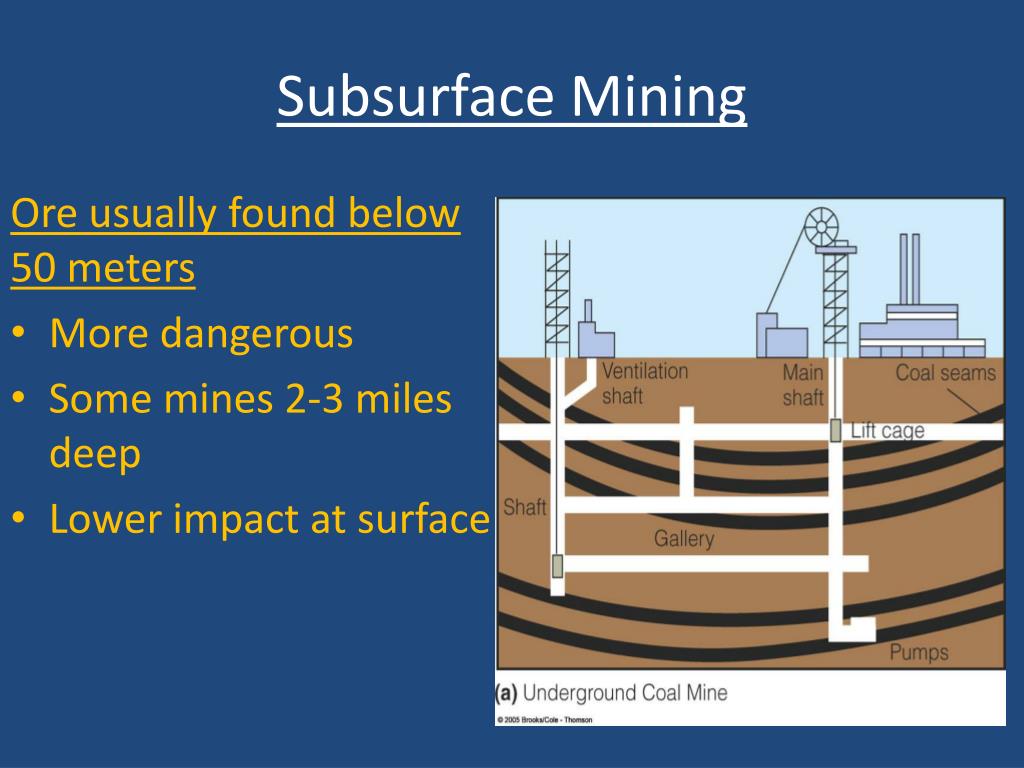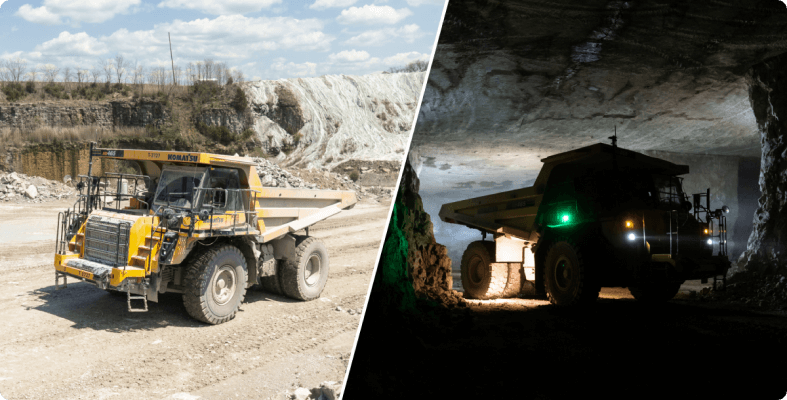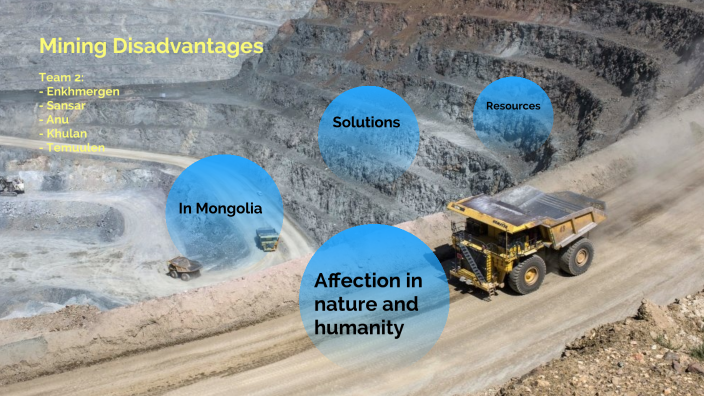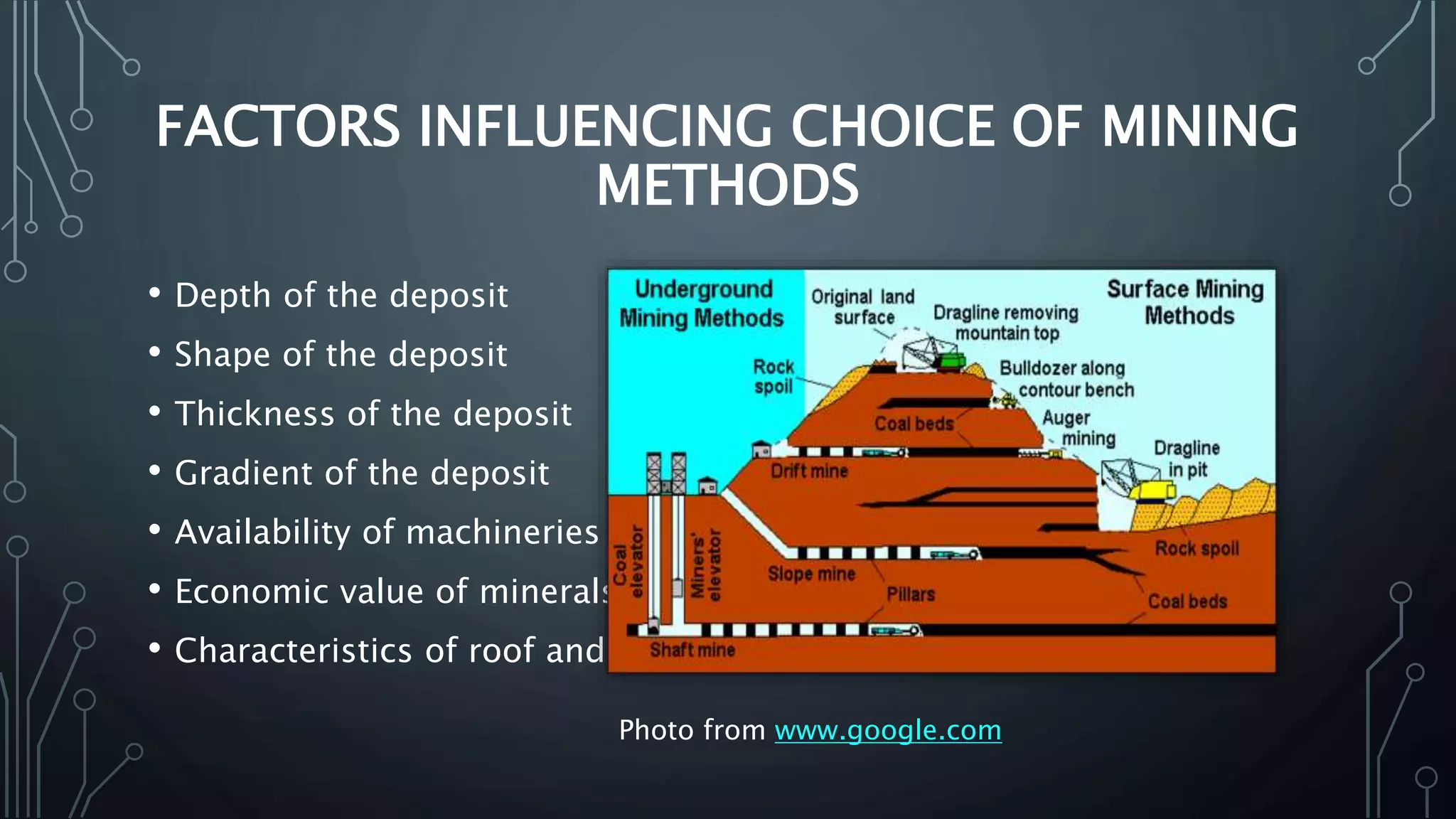Pros And Cons Of Surface Mining
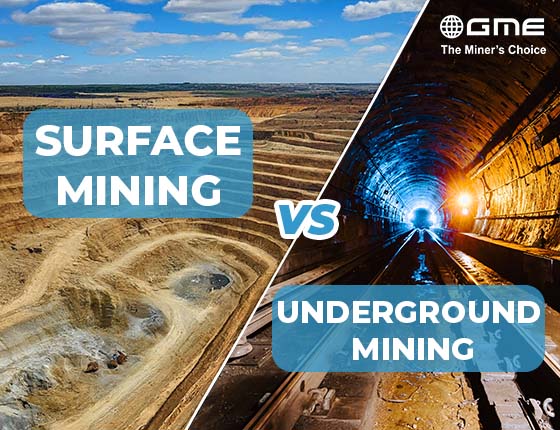
Imagine standing at the edge of a vast expanse, the earth sculpted into terraces descending into the depths. Sunlight glints off the exposed rock, a testament to human endeavor. This is surface mining, a practice as old as civilization itself, simultaneously a source of life-sustaining resources and a subject of intense debate.
Surface mining, also known as open-pit or strip mining, involves extracting minerals and resources from the earth by removing the overlying soil and rock. While crucial for obtaining materials vital to modern society, this method presents a complex array of benefits and drawbacks that demand careful consideration. This article explores the multifaceted nature of surface mining, weighing its economic importance against its environmental and social consequences.
The Ubiquitous Need for Surface Mining
Surface mining provides raw materials for countless industries.
From the coal that fuels power plants to the iron ore that forms the backbone of our infrastructure, the products of surface mining are woven into the fabric of our daily lives. Consider the smartphone in your hand: its components rely on minerals extracted through mining operations.
Economic Boons and Job Creation
One of the most compelling arguments in favor of surface mining is its economic impact.
Mining operations often bring jobs to rural areas, providing employment opportunities and boosting local economies. These jobs range from heavy equipment operators and engineers to environmental scientists and administrative staff.
Official statements from mining associations frequently highlight these benefits, showcasing the industry's contribution to GDP and tax revenue.
Resource Accessibility and Efficiency
Surface mining often provides a more efficient and cost-effective way to extract resources compared to underground mining, especially when deposits are located near the surface.
The accessibility of these deposits allows for large-scale extraction, meeting the growing demands of a resource-hungry world. This efficiency translates to lower costs for consumers, making essential materials more affordable.
Environmental Concerns: A Balancing Act
Despite the economic advantages, surface mining undeniably carries significant environmental consequences. The most visible impact is the alteration of landscapes.
Vast areas of land are cleared, disrupting ecosystems and displacing wildlife. The removal of vegetation also contributes to soil erosion and sedimentation in nearby waterways.
Habitat Destruction and Biodiversity Loss
The destruction of natural habitats is a major concern associated with surface mining.
Many species rely on specific ecosystems for survival, and the disruption caused by mining can lead to population decline and even extinction. Data from reputable organizations such as the World Wildlife Fund consistently points to habitat loss as a primary driver of biodiversity loss globally.
Water and Air Pollution
Surface mining can also contribute to water and air pollution.
Runoff from mining sites can carry pollutants, such as heavy metals and chemicals, into nearby rivers and streams, harming aquatic life and contaminating drinking water sources. Dust generated during mining operations can also pose a threat to air quality, impacting human health.
Acid mine drainage, a particularly insidious problem, occurs when rainwater reacts with sulfide minerals exposed during mining, creating sulfuric acid that can leach into waterways.
Land Degradation and Visual Impact
The long-term impact on the land itself is another serious consideration.
Surface mining can leave behind large open pits and disturbed landscapes that are slow to recover. Even with reclamation efforts, it can be difficult to restore the land to its original state, and the visual impact of these operations can be significant.
The aesthetic value of natural landscapes is diminished, affecting tourism and recreational opportunities.
Mitigation and Reclamation: Efforts to Restore Balance
Recognizing the environmental challenges, the mining industry and regulatory agencies have implemented various mitigation and reclamation strategies.
Reclamation involves restoring the land to a usable condition after mining operations have ceased. This can include re-grading the land, planting vegetation, and treating contaminated water.
Regulations and Best Practices
Stringent regulations play a crucial role in minimizing the environmental impact of surface mining.
These regulations often require mining companies to obtain permits, conduct environmental impact assessments, and implement best management practices to prevent pollution and protect sensitive areas. Monitoring and enforcement are essential to ensure compliance with these regulations.
The effectiveness of these regulations varies depending on the jurisdiction and the rigor of enforcement.
Technological Advancements and Innovation
Technological advancements are also contributing to more sustainable mining practices.
New technologies are being developed to reduce water and energy consumption, minimize waste generation, and improve the efficiency of reclamation efforts. For example, some companies are using drones to monitor mining sites and assess environmental impacts.
Sustainable mining practices are becoming increasingly important as the industry strives to reduce its environmental footprint.
Social Considerations: Community Impacts
Beyond the environmental aspects, surface mining can have significant social and cultural impacts on local communities.
While mining can bring economic benefits, it can also disrupt traditional ways of life and create social tensions.
Community Displacement and Resettlement
In some cases, mining operations may require the displacement of communities.
Resettlement can be a traumatic experience for those affected, disrupting social networks and cultural traditions. It is essential that resettlement processes are conducted in a fair and transparent manner, with adequate compensation and support for those displaced.
Health and Safety Concerns
Surface mining poses potential health and safety risks to workers and nearby communities.
Exposure to dust and chemicals can lead to respiratory problems and other health issues. Accidents involving heavy machinery and explosives can also occur. Stringent safety protocols are essential to minimize these risks.
Worker training and safety inspections are vital components of responsible mining operations.
Indigenous Rights and Cultural Heritage
Surface mining can have a particularly profound impact on indigenous communities, often affecting their traditional lands and cultural heritage.
It is essential to respect indigenous rights and involve indigenous communities in decision-making processes related to mining projects. Protecting culturally significant sites and mitigating potential impacts on traditional practices are crucial considerations.
Free, prior, and informed consent is a key principle in ensuring that indigenous communities have a voice in decisions that affect their lands and livelihoods.
The Future of Surface Mining: A Path Towards Sustainability
The future of surface mining hinges on finding a balance between meeting the world's resource needs and protecting the environment and communities.
Sustainable mining practices, technological innovation, and strong regulatory frameworks are essential to minimizing the negative impacts and maximizing the benefits of this industry.
Embracing Circular Economy Principles
A shift towards a circular economy can help reduce the demand for virgin materials and minimize the need for new mining operations.
Recycling, reuse, and remanufacturing can extend the lifespan of products and reduce waste. Designing products for durability and recyclability is also crucial.
Investing in Research and Development
Continued investment in research and development is essential to developing more sustainable mining technologies and practices.
This includes research into alternative mining methods, more efficient resource extraction techniques, and improved reclamation strategies. Collaboration between industry, government, and academia is crucial to driving innovation.
Promoting Transparency and Accountability
Transparency and accountability are essential for building trust and ensuring that mining operations are conducted responsibly.
This includes disclosing environmental and social impacts, engaging with stakeholders, and adhering to ethical business practices. Independent monitoring and verification can also help ensure accountability.
Surface mining, with its inherent complexities, demands a nuanced perspective. It is neither inherently good nor evil, but rather a tool with the potential for both great benefit and significant harm. The key lies in our ability to wield this tool responsibly, with a deep understanding of its consequences and a unwavering commitment to sustainability. As we navigate the challenges of a resource-dependent world, it is our collective responsibility to ensure that surface mining contributes to a future where economic prosperity and environmental stewardship go hand in hand.
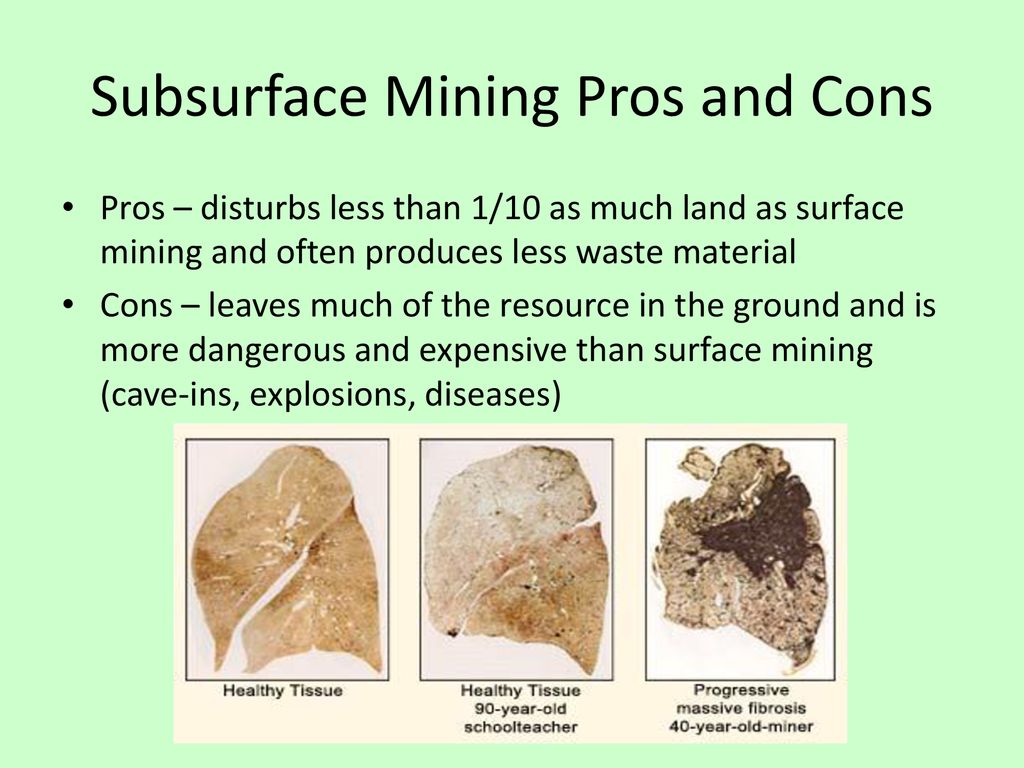
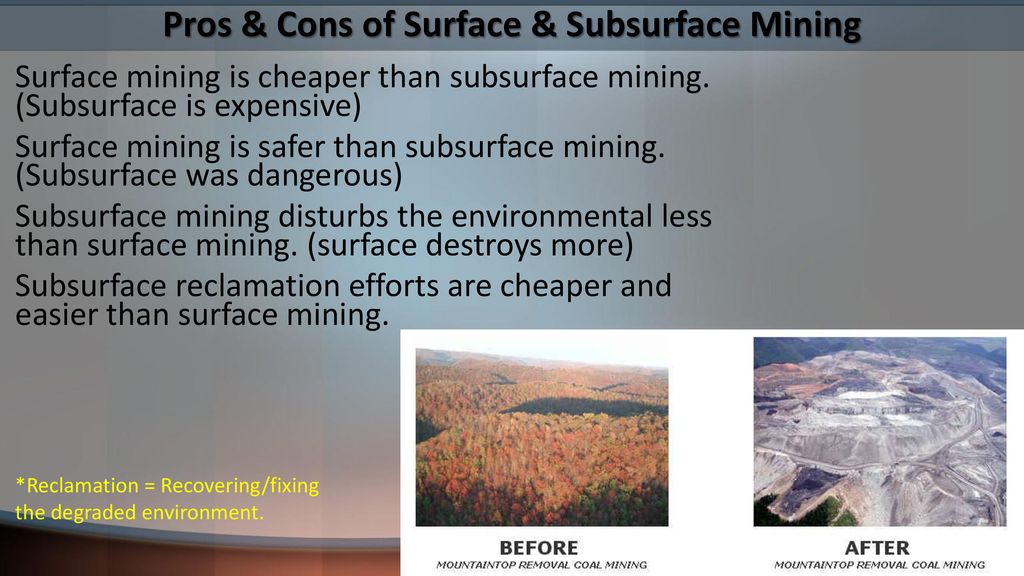
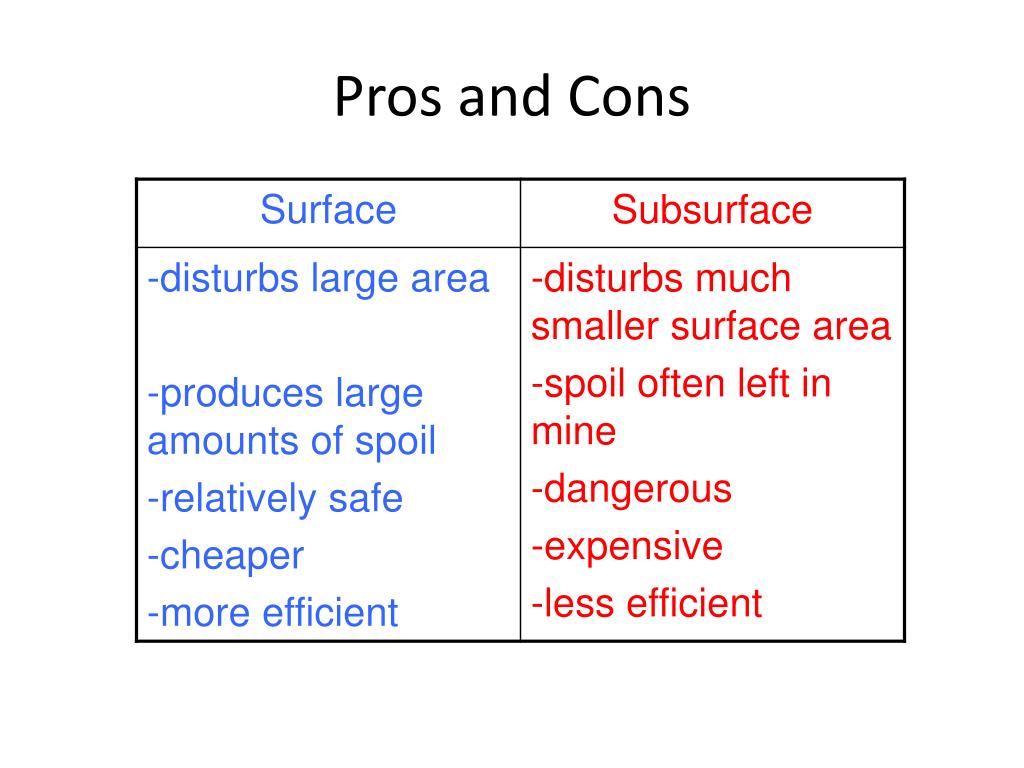

+allows+for+lower+costs%2C+greater+safety%2C+and+mechanically+easier+operations..jpg)
